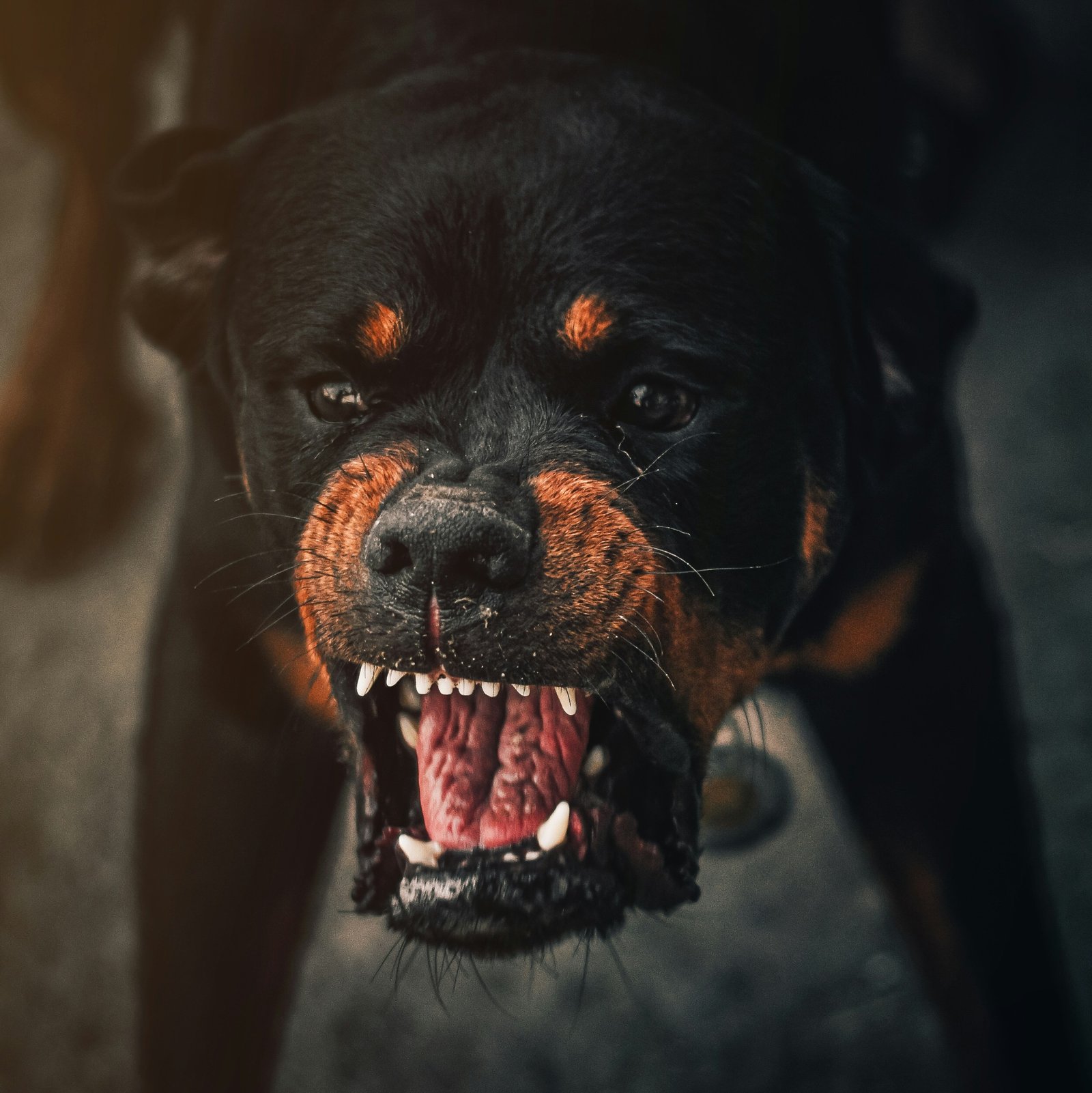I. Introduction
Dogs, often referred to as man’s best friend, are typically known for their loving and gentle nature. However, there may be instances when a dog displays sudden aggression, which can be alarming and confusing for their owners. This article aims to shed light on the reasons why dogs may suddenly become aggressive, the signs to look out for, and how to effectively deal with such scenarios.
Understanding why your dog is suddenly showing signs of aggression is crucial. Not only does it ensure the safety and well-being of those around the dog, but it also helps to maintain the overall health and happiness of the dog itself. By promptly recognizing and addressing this issue, you can restore peace within your household and prevent potential accidents.
II. Understanding Dog Behavior
Dogs are social creatures with a wide range of behaviors and traits. While they are generally friendly, playful, and eager to please their human companions, they also have instinctual behaviors that can sometimes lead to aggression. By understanding these basic characteristics, you can identify any sudden changes or unusual behavior in your dog.
Aggression in dogs can stem from various factors. It may be a response to a perceived threat, an expression of dominance, or a symptom of an underlying health issue. Recognizing the common reasons for aggression can help you effectively address the problem and ensure the safety and well-being of both your dog and those around them.
A. Perceived Threats
One potential trigger for sudden aggression in dogs is a perceived threat. This could include situations where the dog feels cornered, frightened, or provoked by something or someone. Dogs have a natural instinct to protect themselves and their territory, and in such situations, they may exhibit aggressive behavior as a means of self-defense.
B. Dominance and Territory
Dominance can also play a role in aggressive behavior. Dogs have a hierarchical social structure, and some may display aggression to establish their dominance or protect their territory. This can be seen when a dog becomes possessive over their food, toys, or even their living space. It’s important to address these behaviors and establish clear boundaries to prevent potential aggression.
C. Underlying Health Issues
Sometimes, sudden aggression in dogs can be a symptom of an underlying health issue. Pain or discomfort can cause a dog to become irritable and lash out. It’s crucial to consider a health check-up for your dog if they are displaying uncharacteristic aggression, as medical conditions could be the root cause of their behavior.
III. Signs of Aggression in Dogs
Aggressive behavior in dogs can manifest in various ways. Physical signs may include growling, baring teeth, snapping, lunging, or even biting. These behaviors are clear indications of aggression and should never be ignored.
Apart from physical signs, there are also behavioral indicators that suggest aggression. These may include sudden changes in demeanor, excessive protectiveness over food or toys, or signs of discomfort when approached. Recognizing these changes and addressing them early on can help identify potential issues and take appropriate action.
A. Changes in Demeanor
If your dog suddenly becomes more withdrawn, easily agitated, or displays signs of fear or anxiety, it could be a sign of aggression. Dogs may exhibit behaviors such as excessive barking, growling, or showing their teeth when they feel threatened or uncomfortable. Paying attention to these changes in demeanor can help you identify and address any potential issues.
B. Resource Guarding
Resource guarding is another sign of aggression in dogs. This occurs when a dog becomes possessive over their food, toys, or other valuable items. They may growl, snap, or even bite if someone tries to take these items away. It’s important to address resource guarding behaviors to prevent potential conflicts and ensure the safety of everyone involved.
C. Discomfort when Approached
Dogs may also display signs of aggression when they feel uncomfortable or threatened by someone approaching them. This could be due to a lack of socialization, past traumatic experiences, or simply feeling overwhelmed. It’s crucial to respect a dog’s personal space and gradually introduce them to new people, animals, or environments to prevent any aggressive reactions.
IV. Possible Triggers of Sudden Aggression
Aggression in dogs can be triggered by a variety of factors. It’s important to understand these triggers to effectively address and manage sudden aggression in your dog.
A. Medical Conditions and Pain
Underlying medical conditions or pain can significantly impact a dog’s behavior and potentially lead to aggression. If your dog is displaying sudden aggression, it’s important to consider a visit to the veterinarian to rule out any health issues. Treating the underlying medical condition can help alleviate the aggression and improve your dog’s overall well-being.
B. Fear and Anxiety
Dogs may also exhibit aggressive behavior when they feel fearful or anxious. Situations that trigger fear or anxiety can vary from loud noises, unfamiliar environments, or even certain people or animals. Identifying and managing these triggers can help prevent aggressive reactions and create a more comfortable environment for your dog.
C. Resource Guarding and Territorial Behavior
Resource guarding, where a dog becomes possessive over their food, toys, or territory, can also result in sudden aggression. Dogs may perceive others as a threat to their resources and respond aggressively to protect them. Understanding and addressing resource guarding behaviors through proper training and management techniques can help prevent potential aggression.
V. Steps to Address Sudden Aggression
Addressing sudden aggression in dogs requires a systematic approach that focuses on identifying the underlying causes and implementing appropriate measures to manage and modify their behavior.
A. Rule Out Medical Causes
The first step in addressing sudden aggression is to rule out any potential medical causes. A visit to the veterinarian can help identify and treat any underlying health issues that may be contributing to the aggression. This ensures that your dog’s well-being is prioritized and any necessary medical intervention is provided.
B. Consult a Professional
Seeking the guidance of a professional, such as a dog behaviorist or trainer, can provide valuable insights and strategies for managing and modifying your dog’s aggressive behavior. These professionals have the expertise to assess your dog’s unique situation, identify the root causes of aggression, and recommend suitable behavior modification techniques.
C. Behavioral Training and Environment
Behavioral training plays a crucial role in addressing sudden aggression. Through positive reinforcement techniques, you can teach your dog alternative behaviors and reinforce positive interactions. Creating a safe and structured environment for your dog, with consistent routines and rules, can also help reduce anxiety and prevent potential triggers of aggression.
D. Socialization and Obedience Training
Early socialization and obedience training are essential in preventing aggression. By exposing your dog to various people, animals, and environments from a young age, you can help them develop appropriate social skills and reduce the likelihood of aggressive behaviors. Obedience training also establishes clear communication and boundaries, promoting a well-behaved and balanced dog.
VI. Prevention and Management
Prevention is key when it comes to managing sudden aggression in dogs. By taking proactive measures, you can create a safe and harmonious environment that reduces the likelihood of aggressive behavior.
A. Early Socialization
Early socialization is crucial in preventing aggression. Introduce your dog to different people, animals, and environments during their critical socialization period. This helps them become familiar with various stimuli, reducing the likelihood of fear or aggression towards new experiences.
B. Consistency and Structure
Consistency in routines and rules provides a sense of security for dogs. Establish clear boundaries and expectations, and ensure that everyone in the household follows them consistently. Dogs thrive in structured environments, and a consistent routine can help minimize anxiety and prevent potential triggers of aggression.
C. Managing Triggers and Stressors
Identifying and managing triggers and stressors is essential in preventing aggressive behavior. This may involve reducing exposure to situations that cause fear or anxiety, providing a safe space for your dog to retreat to when feeling threatened, and closely monitoring interactions with other animals or people. By proactively managing these triggers, you can create a calmer and less confrontational environment for your dog.
VII. Seeking Professional Help
Dealing with an aggressive dog can be challenging, and seeking professional help is crucial for effective management and behavior modification.
A. Certified Dog Behaviorist or Trainer
Working with a certified dog behaviorist or trainer can provide the necessary guidance and support during this challenging time. These professionals have a deep understanding of dog behavior and can help identify the root cause of aggression in your dog. They will develop personalized training strategies to address the issue and guide you through the process of modifying your dog’s behavior.
B. Objective Insights and Effective Strategies
Professionals can provide objective insights into your dog’s aggression and recommend effective strategies for managing and correcting the behavior. They have experience in dealing with various cases of aggression and can tailor their approach to suit your dog’s unique needs. Seeking professional help ensures that you receive expert advice and increases the likelihood of a positive outcome.
VIII. Conclusion
In conclusion, sudden aggression in dogs can be disconcerting, but understanding the potential triggers and signs can help effectively manage the situation. It is imperative to promptly address such behavior to ensure the safety and well-being of both the dog and those around it.
By taking proactive steps such as early socialization, regular vet check-ups, and seeking professional advice when necessary, you can help ensure that your dog is happy, well-behaved, and less likely to display sudden aggression. Remember, prevention and early intervention are key in promoting a harmonious relationship with your furry companion.











